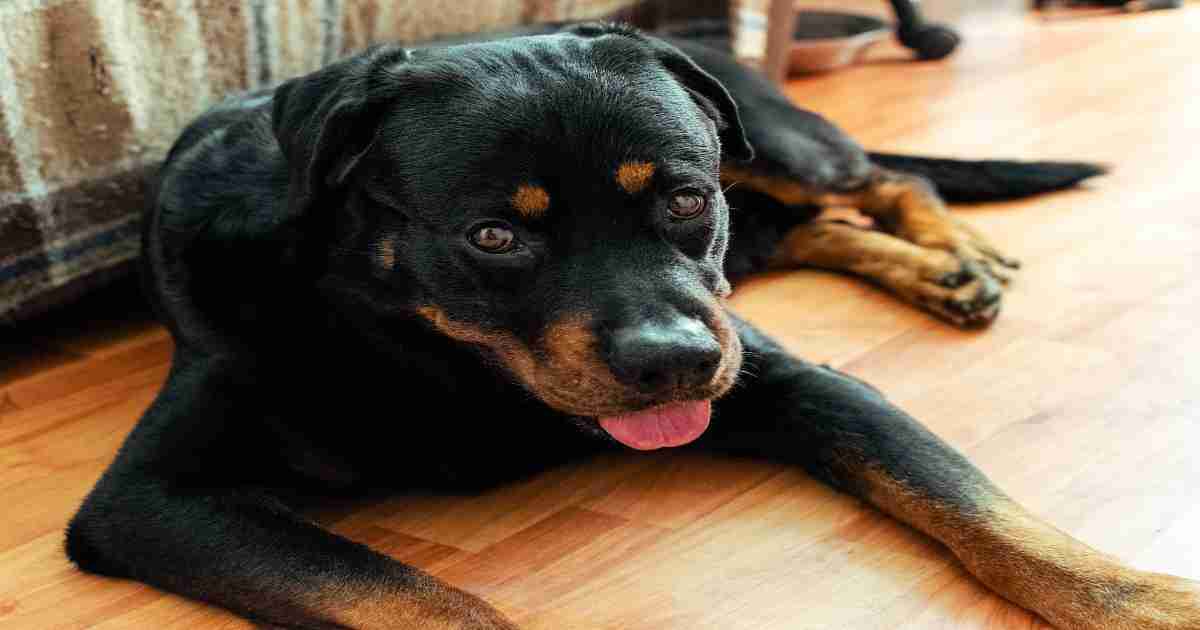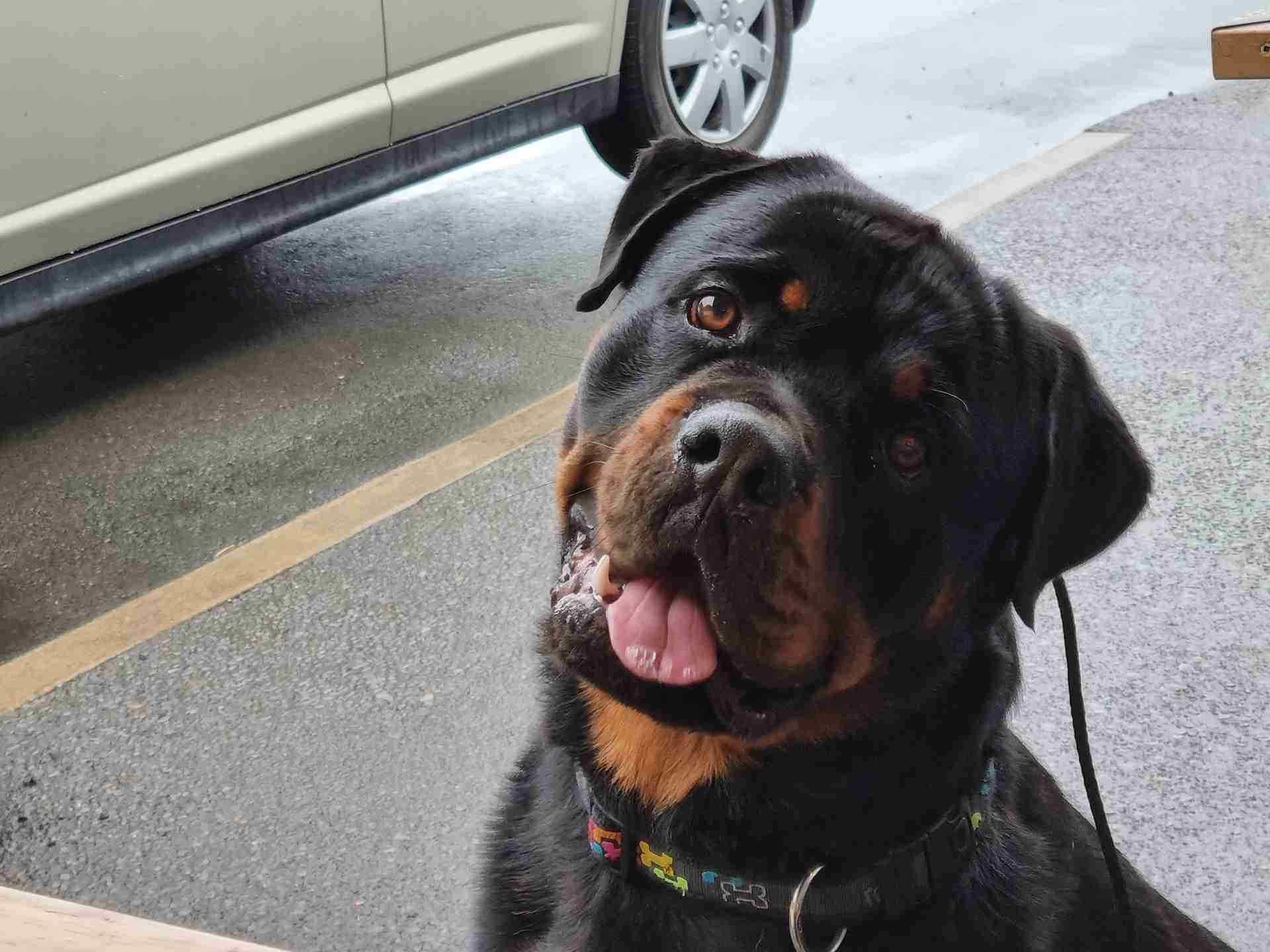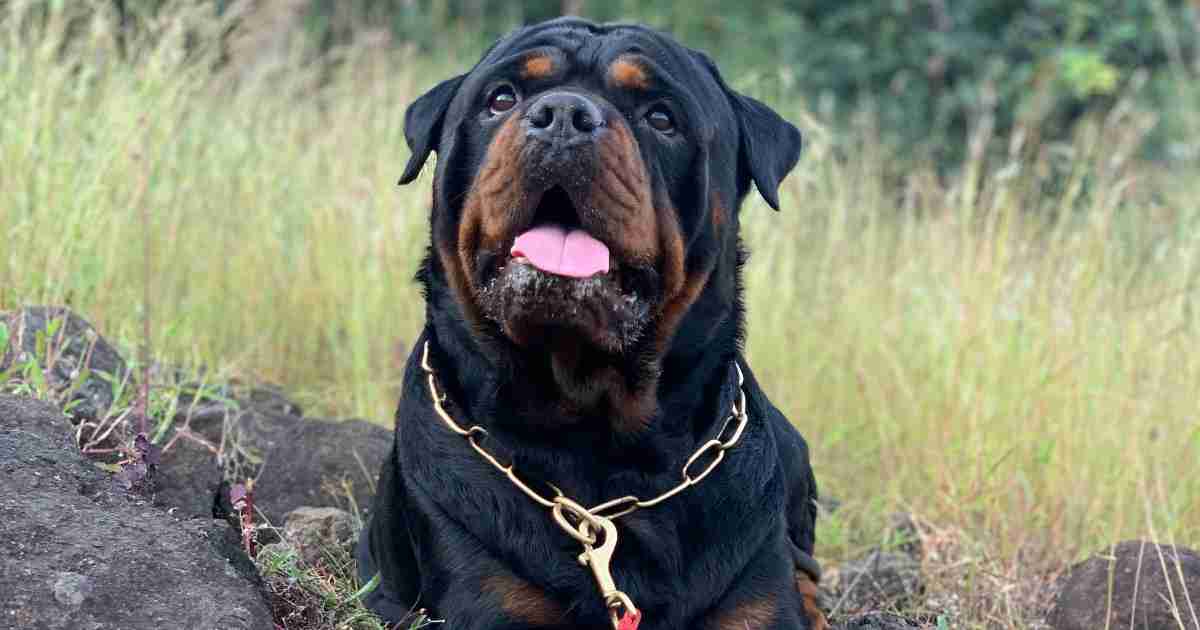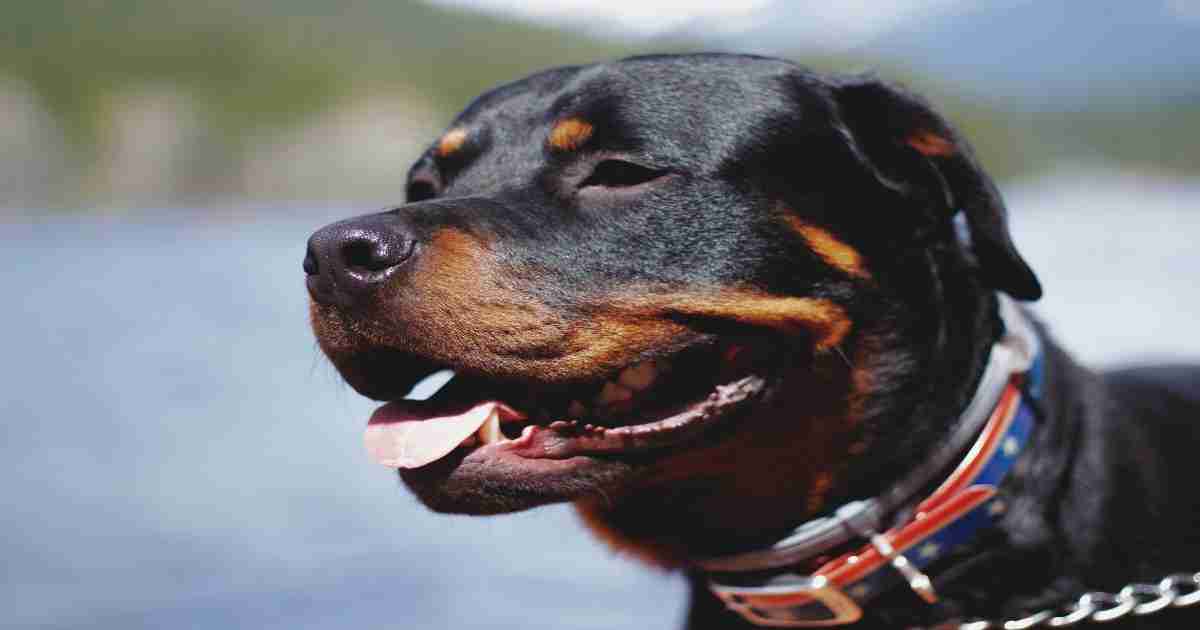The Rottweiler is one of the most popular big dog breeds. These dogs are known for their black coats and brown markings. Giant Rottweilers usually grow 24-27 inches tall and weigh 85-135 pounds.
But some Rottweilers grow way past the normal size for the breed. These giant Rottweilers can reach 30 inches tall and over 150 pounds!
What makes some Rottweilers so huge? And what kind of care do they need?
At the point when you consider a Rottweiler, you likely picture a major, tough canine. But not too giant.
The Rottweiler was first bred to be a working dog. Useful traits were valued overlooks, like strength, endurance, and trainability.
However, some Rottweilers are enormous – much larger than the breed standards say they should be. These giant Rottweilers look cool but often have serious health problems.
Typical Size of Giant Rottweilers
As Per the American Kennel Club (AKC) rules, male Rottweilers should be 24–27 inches tall at the shoulders when completely developed. Females are a bit smaller at 22-25 inches tall.
The AKC says the healthy weight for the breed is 85-135 pounds. The dog’s height and bone structure are factors.
Show dogs are often at the top of the weight range since judges like to see thicker bones and muscle.
For comparison, Labrador Retrievers only get up to 24.5 inches tall as males. Great Danes can reach up to 32 inches! So the Rottweiler is right in the middle regarding large dog sizes.
What Makes Rottweilers Become Giants?
What makes a few Rottweilers get much greater than they should be? There are three major reasons:
Genetics:
Some Rottweiler family lines carry genes that make the dogs grow larger than normal. Breeders should not mate two giant Rottweilers, as this will likely result in more oversized puppies prone to health problems.
Overfeeding:
Feeding a Rottweiler puppy too many high-calorie foods too quickly often results in fast, unhealthy growth beyond the normal size range. Even dogs not genetically prone to being giants can become obese.
Lack of Exercise:
Rottweilers need at least 60-90 minutes of brisk walking and daily playtime. Without enough activity, extra calories get stored as fat instead of helpful muscle.
Giant Rottweiler Health Issues
Sadly, Rottweilers that grow too fast into giant sizes often develop health problems:
Bone/Joint Problems
One of the most common issues for giant Rottweilers is painful hip and elbow dysplasia. Their bones don’t develop properly due to the rushed growth. It leads to future arthritis.
Heart Problems
Pumping blood for an oversized body strains the cardiovascular system. It can bring about dangerous heart conditions like cardiomyopathy or congestive cardiovascular breakdown.
Shorter Lifespan
Giant Rottweilers live only 6-8 years versus 9-11 years for normal-sized dogs. Their health complications due to size result in earlier death.
Other Concerns
Giant Rottweilers may also face higher risks for problems like bloat, skin infections, overheating, and certain cancers. Their enormous size affects all aspects of their health.
Caring for a Giant Rottweilers
Owning a giant Rottweiler comes with caretaking responsibilities:
Appropriate Diet
It’s key to feed high-quality large-breed dog food. Consult your vet to ensure your dog gets the necessary calories and nutrition – without going overboard and spurring more growth. Never free-feed an oversized Rottweiler.
Exercise Needs
Ensure your giant Rottweiler gets enough activity daily to stay physically fit. Hold back nothing an hour and a half of strolling, running, swimming, or playing with different canines daily. Low-impact exercise like swimming is great for their joints.
Grooming
Brush your giant Rottweiler weekly to remove loose fur. Check for any new lumps or skin issues while grooming. Trim their nails often to avoid extra strain on weight-bearing leg joints.
Vet Checkups
Your giant Rottweiler should visit the vet annually for a full exam and bloodwork. Discuss emerging orthopedic problems and prevention of heart disease.
It is very important to catch health issues early through regular veterinary checkups for giant Rottweilers
Training Giant Rottweilers
Proper socialization and training are crucial for giant Rottweilers:
Socialization
These big dogs can seem even larger due to the breed’s guard dog reputation. Starting young, socialize your Rottweiler thoroughly to shape good interactions with strangers. Prevent overprotectiveness or fear-based aggression.
Obedience
Work daily on mastering cues like sit, stay, down, heel, and recall. A well-trained giant Rottweiler who follows commands makes it easier to manage its size and avoid any behavior issues.
Behavior Management
Never permit jumping, mouthing, or rough play in a giant Rottweiler puppy. These behaviors quickly become dangerous in a 150+ pound dog. Use positive reinforcement to encourage calm, settled conduct from the start.
Finding a Responsibly Bred Rottweiler
Carefully select an ethical, responsible Rottweiler breeder focused on the breed’s health and temperament – not extreme size.
Meet both parents to see their size, personalities, and living conditions. Reputable breeders will vet you thoroughly, too, knowing giant Rottweilers require dedicated owners.
Conclusion
While giant Rottweilers look cool, their huge size creates health problems. Through careful breeding practices, these extra-large dogs should become less common.
Proper nutrition, training, exercise, and vet care can help giant Rottweilers live happier, healthier lives within their physical limits.
But their care does demand committed owners. With dedication, even giant Rottweilers can have full lives!
FAQs
Q: Are giant Rottweilers aggressive?
A: With proper socialization and training, giant Rottweilers should not inherently be aggressive dogs. However, intensive obedience work is vital to manage their impressive size and prevent dangerous behaviors.
Q: What’s the biggest Rottweiler on record?
A: The largest Rottweiler ever recorded was a dog named Zeus, owned by Kevin Doorlag. Zeus measured a staggering 44 inches tall from paw to shoulder and weighed nearly 200 pounds! He passed away at the age of 5 from cardiac issues.
Q: How long do giant Rottweilers live?
A: Unfortunately, giant Rottweilers have a reduced average lifespan of just 6-8 years versus 9-11 years for Rottweilers within the normal size range. Their multiple health problems due to excessive size result in earlier mortality.
Q: Should I let my Rottweiler puppy grow as large as possible?
A: No, you should never intentionally try to grow a Rottweiler puppy to an enormous size. Allowing rapid, uncontrolled growth will likely lead to future orthopedic diseases like hip dysplasia, higher vet bills, and other health concerns.
Q: Are male or female Rottweilers larger?
A: Male Rottweilers tend to be slightly taller and heavier than females, even when raised responsibly. So male dogs are more prone to reaching giant proportions outside the standard size range. Selective breeding is key to preventing this.









2 thoughts on “Giant Rottweilers: Avoid These 5 Common Mistakes!”